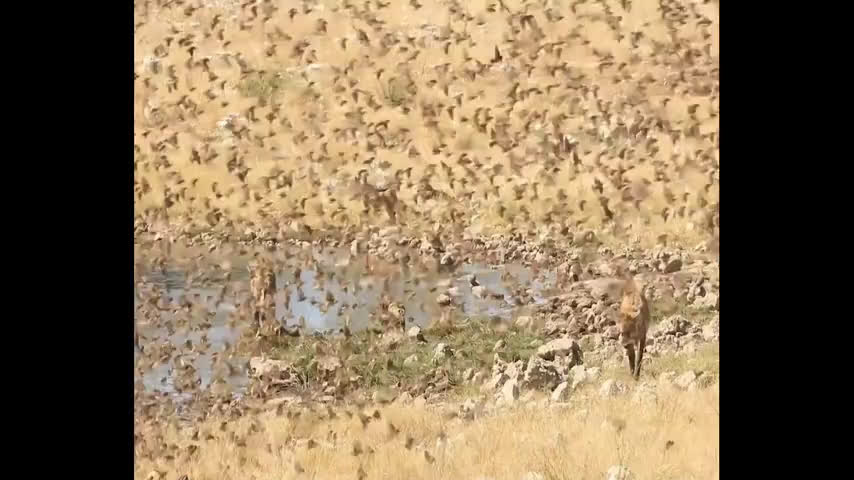Spotted hyenas are renowned for their versatility in prey selection, displaying a remarkable ability to hunt and scavenge a diverse array of animals across their habitats in Africa. From large mammals like antelopes to reptiles and even other carnivores, the dietary preferences of spotted hyenas reflect their status as opportunistic omnivores. However, recent observations by scientists from the Leibniz Institute for Zoo and Wildlife Research (Leibniz-IZW) and the University of Ljubljana have shed new light on the culinary repertoire of these fascinating predators. In the arid landscapes of Namibia’s Etosha National Park, spotted hyenas have been documented exhibiting an unexpected behavior: hunting and consuming small passerine birds, specifically red-billed queleas (Quelea quelea). This article delves into the intriguing discovery of spotted hyenas diversifying their diet with avian delicacies, offering insights into their foraging strategies and ecological adaptations.
The Versatility of Spotted Hyenas: An Overview
Spotted hyenas occupy a prominent niche in African ecosystems, where they play crucial roles as both hunters and scavengers. Their robust physique, powerful jaws, and highly social behavior make them formidable predators capable of taking down large prey. Yet, their dietary flexibility extends beyond conventional carnivory, encompassing scavenging behaviors that enable them to exploit a wide range of food sources. From wildebeests to giraffes, spotted hyenas demonstrate a remarkable ability to capitalize on opportunities presented by carcasses, ensuring their survival in diverse habitats.
A Surprising Addition to the Menu: Hunting Passerine Birds
While the dietary preferences of spotted hyenas have been extensively studied, the recent observations of their predation on red-billed queleas mark a notable departure from conventional prey items. Red-billed queleas, known for their massive flocks and ubiquitous presence in the African savannah, represent a novel food source for spotted hyenas. The researchers from Leibniz-IZW and the University of Ljubljana documented instances of spotted hyenas actively pursuing, capturing, and consuming these small passerine birds at waterholes in Etosha National Park. This unexpected behavior underscores the adaptability of spotted hyenas and highlights their ability to exploit niche resources in their environment.
Insights from Field Observations: Hunting Tactics and Feeding Behavior
The field observations conducted by the research team provided invaluable insights into the hunting tactics and feeding behavior of spotted hyenas preying on red-billed queleas. Through meticulous documentation of the hyenas’ interactions with the avian prey, including chasing flying birds and scavenging from the ground or water surface, the researchers gained a comprehensive understanding of their foraging strategies. Remarkably, the observed success rate of approximately one bird every three minutes highlights the efficiency with which spotted hyenas capitalize on this newfound food source. Moreover, the consumption of whole birds by hyenas underscores their adaptability to diverse dietary items and further underscores the complexity of predator-prey dynamics in African ecosystems.
Implications for Ecological Understanding and Conservation
The documentation of spotted hyenas hunting passerine birds expands our knowledge of their dietary ecology and underscores the importance of considering their role as predators in ecosystem dynamics. By incorporating small birds into their diet, spotted hyenas may influence avian populations and contribute to shaping community structures in their habitats. Furthermore, the observed behavior highlights the resilience of spotted hyenas in the face of environmental variability and emphasizes the need for comprehensive conservation strategies that account for their multifaceted ecological roles.
The discovery of spotted hyenas adding small birds to their menu in Namibia’s Etosha National Park represents a significant advancement in our understanding of their dietary ecology. By elucidating the intricacies of predator-prey interactions and foraging behaviors, researchers have unveiled yet another facet of the adaptability and versatility of these iconic African predators. As we continue to unravel the complexities of carnivore ecology, the study of spotted hyenas serves as a testament to the dynamic nature of ecosystems and the vital role of apex predators in maintaining ecological balance.
